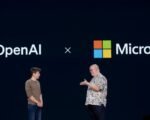Microsoft has donated its DocumentDB project to the Linux Foundation, positioning it as a free, open source option to challenge MongoDB in the database market. This move, announced in late August 2025, brings together major cloud players like Amazon Web Services and Google to support a neutral standard for document databases, which could change how companies build and manage data systems.
What the Donation Means for the Database World
This donation creates the first open standard for document databases, similar to how SQL works for traditional databases. Without such standards before, companies often got stuck with one vendor’s tools, making it hard to switch or mix systems.
The Linux Foundation now oversees DocumentDB, ensuring it stays neutral and open to contributions from anyone. This setup encourages more innovation and helps avoid the lock in problems seen with proprietary options.
Experts say this could lower costs for businesses by offering a reliable alternative that works across different cloud platforms. With backing from rival companies, it shows a rare team up in tech to push for better, shared tools.
How DocumentDB Builds on PostgreSQL
DocumentDB started as extensions to PostgreSQL, a popular and reliable database system. These extensions add support for BSON data formats and queries that match MongoDB’s style, letting developers use familiar tools while gaining PostgreSQL’s strengths.

One key part is the pg_documentdb_core extension, which handles binary JSON data efficiently. Another, pg_documentdb_api, manages create, read, update, and delete operations just like MongoDB.
This blend allows complex queries that mix document style work with traditional relational tasks in one place. It cuts down on the need for multiple databases, saving time and resources for teams.
PostgreSQL’s extensibility makes DocumentDB flexible for various needs, from simple apps to large scale operations. Recent updates have improved its speed and reliability, drawing interest from developers worldwide.
The project uses the MIT license, making it easy for anyone to use and modify without restrictions.
Key Features That Set DocumentDB Apart
DocumentDB offers several standout features that make it appealing for modern applications.
- Native vector search integration, powered by advanced algorithms from Microsoft Research, supports AI tasks like similarity searches and content recommendations.
- Full compatibility with MongoDB drivers, so existing code can switch over with minimal changes.
- Advanced indexing options, including geospatial and text searches, for handling location based and search heavy apps.
- Precise decimal handling for financial applications, ensuring accurate calculations without data loss.
These elements position DocumentDB as more than just a copy; it adds value through better integration and performance.
In terms of scalability, it leverages PostgreSQL’s proven engine to handle large datasets efficiently.
| Feature | DocumentDB | MongoDB |
|---|---|---|
| Base System | PostgreSQL extensions | Proprietary engine |
| License | MIT open source | Server Side Public License |
| Vector Search | Built in with DiskANN | Available but requires setup |
| Cloud Support | Multi vendor (AWS, Google, Microsoft) | Primarily MongoDB Atlas |
| Standardization | Linux Foundation governed | Vendor specific |
This table highlights how DocumentDB provides broader access and neutrality.
Support from Cloud Giants and Industry Impact
Amazon Web Services, Google, and Microsoft have all thrown their weight behind this project, a surprising alliance in the competitive cloud space. Their involvement ensures DocumentDB gets resources for growth and testing across platforms.
This backing signals a shift toward open standards in NoSQL databases, potentially reducing vendor lock in for enterprises. Analysts predict this could save companies millions in migration costs over time.
For smaller firms, it means access to high end tools without big fees. The project’s rapid growth since its 2024 start shows strong community interest.
Recent events, like the rise of AI driven apps, have boosted demand for databases that handle vectors well. DocumentDB’s timing taps into this trend perfectly.
Why This Matters for AI Workloads
AI applications often need fast vector searches for tasks like generating responses or finding similar items. DocumentDB’s built in support for these, using efficient indexing, gives it an edge.
Developers building AI assistants or recommendation systems can use it to store and query embeddings quickly. This integration with tools like pg_vector makes it ready for retrieval augmented generation, a hot area in AI.
Compared to specialized vector databases, DocumentDB offers a complete package with document storage. Posts on social platforms highlight excitement about its potential to simplify AI infrastructure.
As AI adoption grows, expected to reach trillions in market value by 2030, tools like this become crucial for efficient data handling.
Looking Ahead: Challenges and Opportunities
While promising, DocumentDB faces hurdles like building a larger user base and proving long term stability. Early adopters report smooth transitions, but widespread use will take time.
Opportunities abound in areas like edge computing and hybrid clouds, where its flexibility shines. Future updates may add more AI specific features, based on community input.
Overall, this donation could spark more open source collaborations in databases, benefiting the entire industry.
What do you think about this development? Share your thoughts in the comments below and spread the word if you found this helpful.








